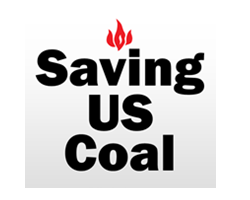
 











|
Signature Sponsor


By Bill Reid, Managing Editor, CoalZoom
March 6, 2022 - “The EPA is ramping up its regulatory assault on coal and power producers are moving away from it. So, the coal industry needs to continue its defense. But defending the status quo is not enough and offense is needed – Coal needs to be “For Something”, said Steve Winberg, Chairman & CEO, Net-Negative CO2 Baseload Generation, in addressing the American Coal Council, Spring Coal Forum held at the Hyatt Clearwater Beach, Clearwater, Florida last week.
Winberg outlined what he thought that “Something” should be. “Positioning the existing coal fleet for the future by using Net-Negative Technology should be at the top of the list. This enables protecting the value of the existing infrastructure,” he said. “Tax credit parity with wind and solar is needed as well as 45Q revisions. Coal-to-Products, Coal-derived CO2-to-Products, and Net-Negative CO2 Coal-to-Energy Generation can create value for society. Net-Negative CO2 Coal-to-Energy can also result in Net-Negative CO2 Hydrogen Technology, ”added Winberg.
Steve Winberg
A coal generating plant with net-negative CO2 emissions is a coal plant that uses coal and biomass, likely in the form of pelletized wood, as fuel to generate electricity and has carbon capture, utilization and storage on the backend. Net-negative emissions are possible because when biomass grows it consumes CO2. A coal plant that uses for example, 80% coal and 20% biomass as fuel, the fuel input stream already has a negative CO2 footprint when it reaches the incoming plant gate. If the plant is equipped with 90%+ carbon capture on its backend, any CO2 lost to the atmosphere is more than made up for by the negative CO2 ffotprint of the biomass fraction of the fuel resulting in the plant’s CO2 emissions being net-negative.
The U.S. biomass resource exists in quantities sufficient to sustain support for coal-biomass co-firing. The U.S. also has abundant domestic coal resources with the world’s largest reserves and a 470-year supply at 2020 consumption rates. 20% co-firing of the entire coal fleet would require 125 million tons/year of biomass. The 2030 domestic, available biomass resource is estimated to be 625 million tons.
“Net-zero targets are unachievable without “Net-Negative” technologies that balance unabateable emissions,” explained Winberg. “Net-Negative CO2 Baseload Power avoids stranding existing assets and further, prevents the abandonment of coal communities.” The complete PowerPoint presentation can be seen here.
|
 








|
